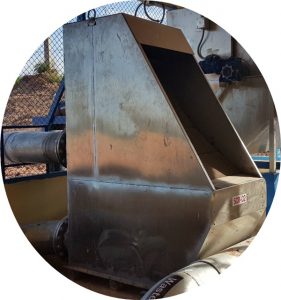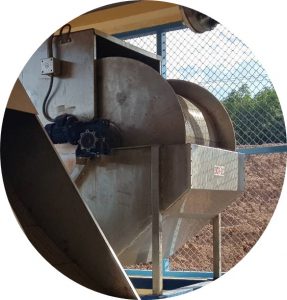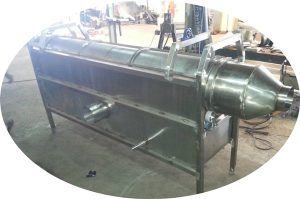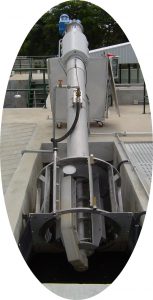Screening Pre-Treatment Wastewater
DESIGN CONSIDERATION
Screen channels should be designed for approach velocities between 2fps (0.6m/s) and 3.3fps (1m/s). If velocities drop below 2fps, grit and screenings might accumulated upstream of the screen. Accumulated debris might lead to functional problems once a peak flow flushes that debris to the screens within a Short time period. If velocities are higher than 3.3 fps (depending on the screen type) debris might bypass the screenings media and end up down stream of the screen. The velocity in the channel can be controlled by utilizing a parshall flume own stream of the screen, or by controlling the wet well water levels. In addition to that, baffle plates can be used to increase the approach velocities to the screen. Sometimes aeration equipment is installed prior to the screen to keep grit suspended to avoid significant sedimentation prior to the screen at low flow scenarios. If large amounts of rocks and gravel are present, a rock trap also can be installed upstream of the screens. This rock trap could be emptied either manually or automatically with the means of a screw auger.
Before selecting and sizing a screenings system the following points should be considered:
- Current plant flows – future plant flows
- Required screenings capture rate or required bar spacing (does the plant process require a certain capture
rate, E.g. MBR plants)
- Head loss across the screen
- Screenings handling, processing and disposal
- Existing or new construction – available space
- Relationship between daily average flow and peak flow
- Wastewater characteristics (grit, gravel, branches, leaves, FOG content, tools and sheets -> prisons)
- Construction, capital cost vs. Life-cycle cost
- Outdoor or indoor installation
- Controls
Static screen

Static screen
Static Screen BKTSS.
- Screens, conveys, washes and dewaters in one unit.
- Openings from 0. 5 to 10 mm.
- Unique bi-wave screen panel.
- Drip lip promotes drier solids.
- Available in 304 or 316 stainless steel.
- Flow distribution baffle maximizes solids capture.
- Pivoting screen panel on 48” , 72” and 120” wide
models facilitates maintenance and clean-up
Drum screen

Rotate drum screen

Drum screen
Rotary filtering drum BKTRFD
- Wedge wire screen media from 1 to 50 mm.
- Wastewater f lows through a flanged gate and is distributed
evenly across the exterior surface of the screen.
- Solids are captured on the screen surface and removed
by a brass cleaning blade.
- Screened wastewater passes through the cylinder automatically
cleaning the opposite side of the screen as it rotates.
- Optional fixed washing system and bypass device.
Drum Fine Screen

Drum fine screen
Drum fine screen BKTDS.
- Screens, conveys, washes and dewaters in one unit.
- Channel widths from 600 mm. to 3000 mm.
- Perforated plate media, openings 1 /1.5 / 2 / 3 mm.
- Triple face seal to prevent solids bypass including hair.
- Available in-channel or in-tank.
- Optional sliding aluminum or stainless steel screen covers
available.
Automatic Fine Screen
Mechanical coarse screen BKTMCS.
- Channel widths from 400 to 2000 mm wide.
- Coarse bar spacing from 12 to 50 mm.
- Fine perforated media from 1, 5 to 8 mm.
- Multiple cleaning rakes/brushes and wipers for faster
solids removal.
- 75° and 90° angle of inclination.
- Recessed chain drive with no sprocket s below the
water level.
Mechanical fine bar screen BKTMBS.
- Channel widths from 400 to 2000 mm. wide.
- Fine bar spacing 6 / 8 / 10 mm.
- Multiple cleaning rakes for faster solids removal.
- 75° and 90° angle of inclination.
- Lower sprocket and maintenance free lower bushing recessed
into the side rails.